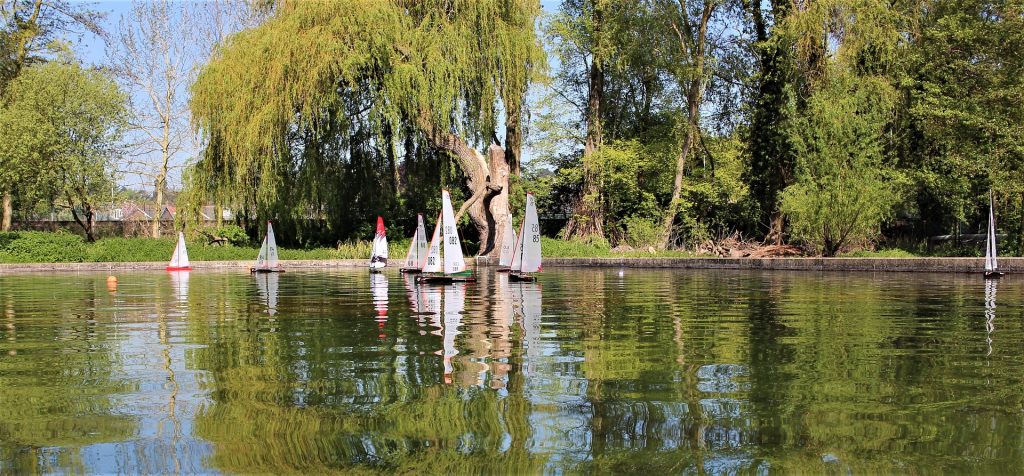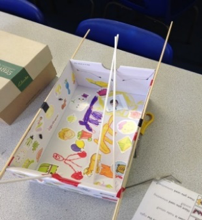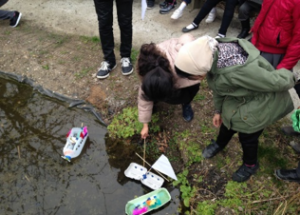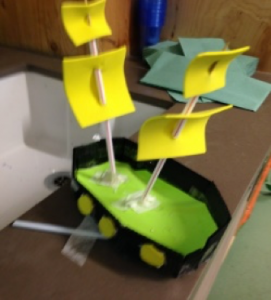Row, row, row your boat…

With the warm weather, we usually have more time to appreciate the parks, countryside, ponds an rivers, the great outdoors. Be it in our back garden or the sprawling Lake District, the Yorkshire Dales or the Norfolk Broads, we often gravitate towards water.
PSTT Regional Mentor Kulvinder Johal has some ideas for children explore floating and sinking by creating boats.
Whether punting in Cambridge, rowing in Hyde Park’s Serpentine, or sailing model boats in other popular relaxation hot spots, boating is an activity we can recreate at home on a smaller level and whilst having fun, children can learn more about the science involved from simple, fun activities. It is easy enough to fill a sink, the bath or your paddling pool to consider which material floats or sink. Are there any common properties between those objects that float? What do we discover about those that sink?
Just a little background about the science involved transforms the activity into a great learning experience. What happens when an object floats? We can understand why an object floats by appreciating two forces that act upon it, its weight and the force of the water pushing it upwards, the upthrust. If the weight of the object (in this case a boat) is equal to or less than the upthrust it will float. If the weight of the object is greater than the upthrust, then the object will sink. Even young children can feel and will understand that the boat has weight (put it on the palm of the hand and ask them to feel that the boat pushes down on their hand) and likewise, can feel water pushing back on them if they push a flat hand down through water – don’t get bogged down in detail and let the children arrive at an understanding that suits their stage of learning. Children might enjoy trying to push an air-filled balloon down into a bucket of water – they will certainly appreciate the force of water pushing back up and resisting the intended movement.
Shall we try to build a boat that will float?
Making a Model Boat
- Cardboard boxes
- Cartons
- Plastic bottles
- Foil/cling film
- Scissors/string
- Rope
- Sellotape/masking tape/glue
Advice/Ideas for completion:
Choose a base for your boat – bottles, a carton, cardboard boxes are all ideal materials.
 Consider how you are going to attach parts together. Give children as much freedom as possible – the more exploration they undertake, the more they will learn from the experience (but be at hand to help out with any frustrations to keep the activity fun and to ensure the desired outcome is achieved where possible).
Consider how you are going to attach parts together. Give children as much freedom as possible – the more exploration they undertake, the more they will learn from the experience (but be at hand to help out with any frustrations to keep the activity fun and to ensure the desired outcome is achieved where possible).
There may be some surprise that cardboard floats and can be used to create a boat that floats. Talk to your child about the changes that occur in the cardboard, how long these take and whether the effects are reversible (e.g. by giving the material time to dry and the re-using it). Compare boats made from recycled plastics with those made with biodegradeable materials. You might also look at materials used for joining – are some glues better than others?
- Can your boat carry any weight?
- How much ‘cargo’ can your boat hold?
- How could you power your boat?
- What difference does a sail make to a boat?
When your boat-building is complete, you may like to look at forces in the air: https://wowscience.co.uk/resource/parachute-adventure/
Health & Safety:
Remind children to be careful when using scissors.
Take extra care when children are near a body of water – activities must always be fully supervised by an adult.
Back to blog



 QUICK
QUICK
 MEDIUM
MEDIUM LONG
LONG





